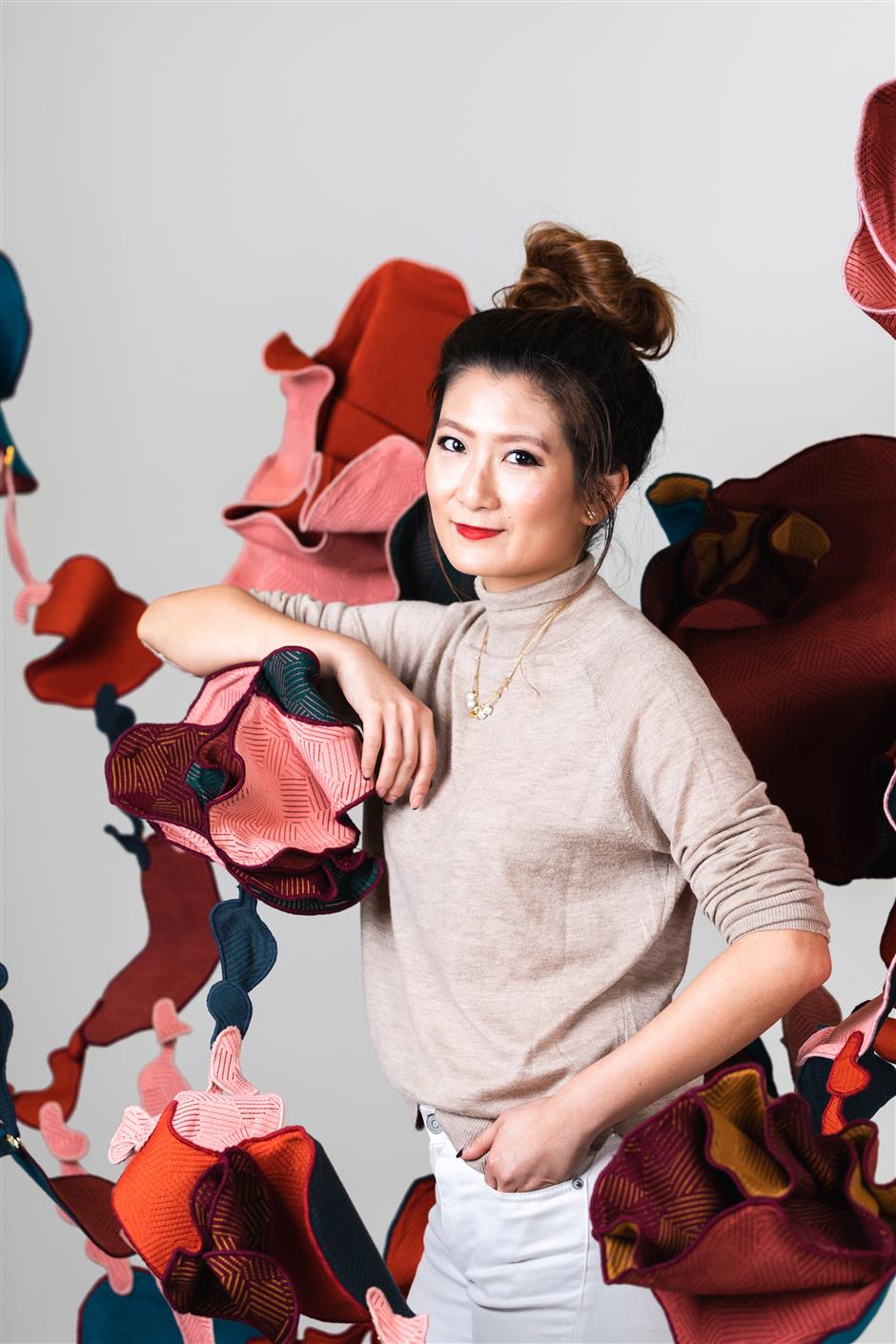Experimenting in art, design and investing in an ecosystem

Elaine Yan Ling Ng
Who is she?
Elaine Yan Ling Ng is the founder of The Fabrick Lab, bringing together textiles, electronics, biomimicry, interiors and installations. Ng is a British Chinese materialologist and graduate of Central Saint Martins in London where she earned her MA Design in Textile Futures with distinction.
She is a TED fellow and is globally recognized, having worked with international design companies, such as Nissan Design Europe and Nokia Design Beijing, with multiple design awards, including Emerging Talent Award by Design Anthology, GGEF’s Eco Innovator Award and Swarovski’s Designer of the Future Award. Awarded by Talter for their Gen T Award, Ng was identified as one of Hong Kong’s top 50 creative visionaries, influential innovators and disruptive talents.
Ng’s approach toward materials is recognized by some of the best in her field and has proved inspirational to many. One of her most recent commissions is a collaboration with UBS Evidence Lab to instigate conversations about sustainability with data, art and design. Her work has been exhibited at places including Art Basel, Design Miami/Basel, V&A and Science Museum in London.
Tell us some of your works and name the one you are most proud of.
Last year I was working on two really interesting projects, Nexus, a commission project by UBS to find a cross disciplinary approach of 3D printing, bringing in data and interactive design with jacquard weaving. The design is inspired by a network of trees, how they communicate with each other, reflecting how sustainability works on a community level.
Another project was Dancing Phoenix. The most interesting aspect is how to design a permanent textile to replace an original missing textile for Haw Par Mansion, a grade-1 listed building.
One of my proudest projects was Sundew For Swarovski. I loved that project, because I had a chance to observe how different visitors interacted with the piece. At a different location we improved the piece in terms of how it can interact with the audience.
The piece has used over 200 million crystals and is controlled by a sound sensor.
Are you currently involved with any project?
I’m working on a new project for ‘Knit! By Kvadrat.’ The piece is called ‘An Alternative Sample Room.’ It is an installation, presenting an experimental way of presenting sample textiles in a more useful and intuitive way.

Details of work by The Fabrick Lab for “Knit! by Kvadrat.”
Describe your design style.
Experimental, interested in the fundamentals of our ecosystem and supply chain.
Where are you most creative?
Working with materials and weaving, when I am working with different machineries and when I am visiting factories and in their prototyping facilities.
What does your home mean to you?
Home, it can be anywhere. Most importantly it is where I can relax and have a proper cup of English breakfast tea, cook and have a proper meal. It is where I can invite friends over for a dinner party to have a good chat, where it allows me to do my weekly flower arrangement.
What do you collect?
I collect many things — things that usually have interesting textures or prints. I love collecting stationery. I collect a lot of paper and tape, these are fun items. On the personal side I like collecting different small ceramic items.
Where would you like to go most in Shanghai?
I love the Long Museum and all the traditional lanes. You never know what you’ll discover. Some of them remain very traditional and some have been transformed with great design insights. If I have time, I love going to Fuxing Park to chill, have a little picnic and observe locals playing Chinese chess.
What will be the next big design trend?
With more awareness of global warming and health concern, all designers have the responsibility to design smartly and responsibly. The new design trend should be designing materials or a system that can benefit from the shortage of raw material or how to harvest renewable energy and health-related product.
















